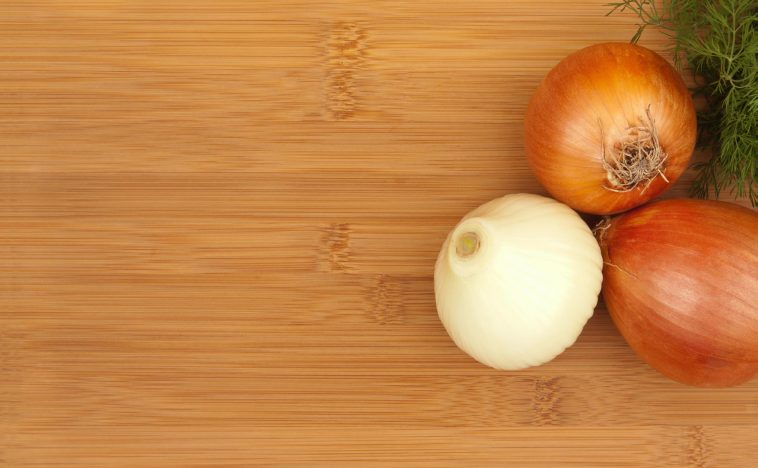Small onions are peeled and stored in brine (salt solution) to facilitate natural fermentation of the product. The fermented onions are then packed and preserved in vinegar to produce pickled onions.
Suitable onions for pickling include brown (28 to 45 mm) and silverskin, pearl or cocktail (10 to 28 mm) onions.
Harvesting of onions
Harvesting is mainly mechanical. A cutter with specially designed blades is drawn through the onion fields several days before the harvesting operation to cut the roots several inches below the onion bulb. This practice speeds up the drying process of the leaves and also helps increase the solids content of the bulb as sugars are drawn from the leaves. Once the leaves have died down, mechanical cutters remove the dry tops near the necks of the bulbs. The bulbs are then dug up by special diggers that lift them out of the soil, shake loose soil off, convey them to the back of the machine and deposit them on the top of the bed.
It is very important to minimise any mechanical damage during the harvesting and handling of onions since this will lead to rapid enzymatic spoilage and microbial decay. While blanching is a method of preventing undesirable enzymatic reactions, onions are usually not blanched, as this will cause leaching of the flavour components.
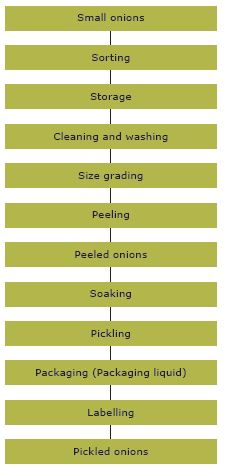
Process description
Sorting of onions
Sorting is necessary to select only sound young onions. The onions are spread out on sorting tables and inspected for injury, infection, and other defects. Large onions are diverted to other processing lines.
Storage of onions
The onions are transported from the field to the processing plant, where they are stored under controlled conditions for a specific time until they are processed. Storage conditions are very important to control bulb dormancy. Optimum storage conditions are 0 to 5 °C at 70 to 75% relative humidity. Sprouting may further be inhibited by controlled atmosphere storage (for example 5 to 10% carbon dioxide, 3% oxygen at 5 °C) or irradiation. The plants may also be given a pre-harvest foliar treatment. The actual storage period varies according to the capacity of the plant and the type of onion cultivar.
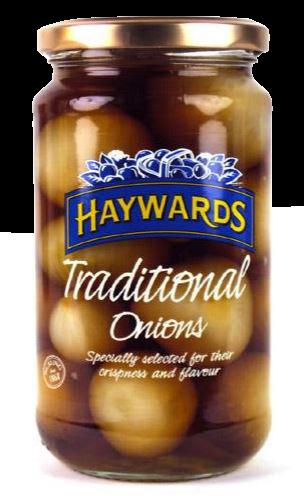
Pickled onions.
Cleaning and washing of onions
The onions are removed from storage and cleaned roughly on vibrating screens to remove adhering soil and dry husks. The onions are then washed in a reel washer.
Grading of onions
The onions are size graded to promote uniform curing and fermentation. Grading is done by hand on sorting tables.
Peeling and trimming of onions
The graded onions should be peeled, topped, tailed, and trimmed. This is often done by hand due to the size of the onions.
Soaking of onions for pickling
The peeled onions are soaked in cold water for 2 to 3 days with regular (2 to 4) changes of fresh water. A small quantity of salt may be added with the final water change. The soaking treatment removes objectionable juices from the onions, that could otherwise cause the curing brines to become dark and putrid.
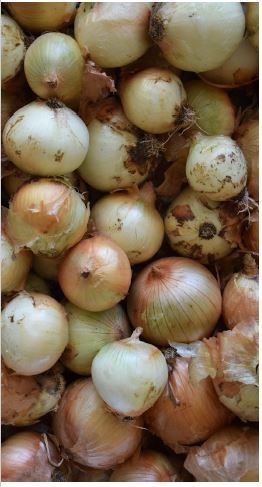
Freshly dried onions.
Pickling of onions
The onions are packed in wooden casks, stainless steel, or glass containers. Take care not to use any other metal containers that are liable to corrode. The onions are covered with a fresh 10 to 15% brine solution. Fermentation takes place in the brine with the formation of lactic acid and a simultaneous decrease in brine strength as the salt is absorbed by the onions. It is essential that the containers be turned or rolled to prevent layers of low concentration brine forming at the top. This prevents the softening of the onions.
As soon as the brine concentration remains constant at 10%, the fermentation is complete. This usually takes 3 to 6 weeks. The fermentation period can be reduced by the addition of lactic acid at the beginning of the process. The optimum temperature for curing is 18 to 25 °C. Below 18 °C, fermentation advances too slowly and above 25 °C the conditions are favourable for bacteria that can cause spoilage.
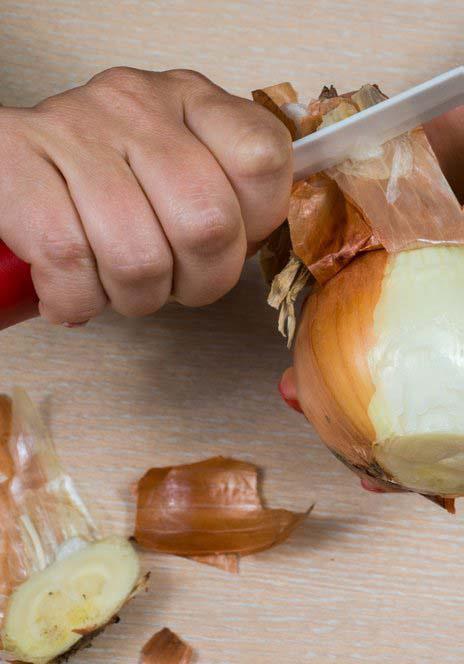
Image source: www.startgoed.nl
Bottling of pickled onions
The brine solution is drained, and the onions are packed into sterilised jars and filled with a 5% boiling vinegar solution. Malt vinegar is used for brown onions and white vinegar for white onions. Sulphur dioxide is sometimes added at a concentration of 40 parts per million (ppm) to act as bleaching agent and improve the colour of the onions. The bottles should be sealed while the vinegar is still hot and capable of creating a vacuum seal upon cooling.
Canning of pickled onions
The onions may alternatively be canned in fully lacquered cans. The canning procedure is the same as for bottling, except the sulphur dioxide is not used because it promotes corrosion. The vinegar added to the cans should be hot filled at a temperature of 93 °C.
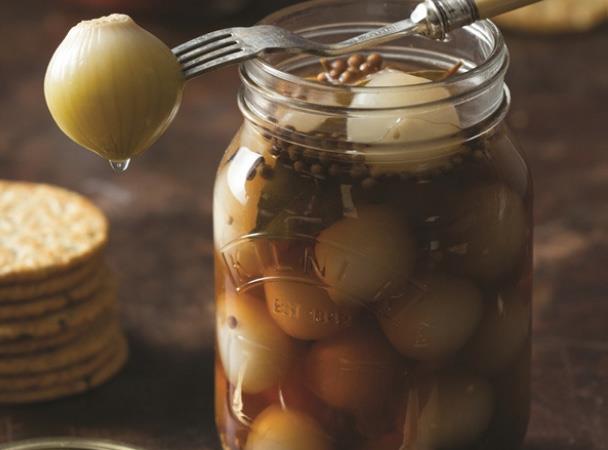
Image source: www.kilnerjar.co.uk
Labelling of vegetable products
Products must be correctly labelled according to the requirements set out in the Labelling and Advertising Regulation R2034/1993.
Published with acknowledgement to the ARC Agricultural Engineering for the use of their manuals. Visit www.arc.agric.za for more information.

